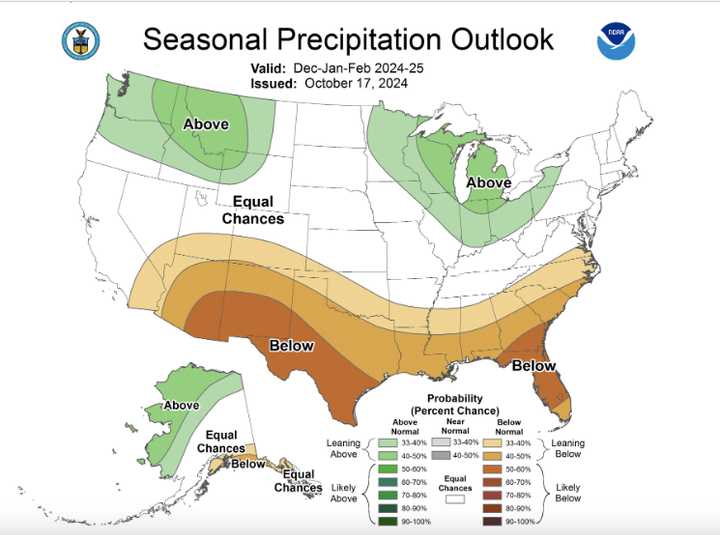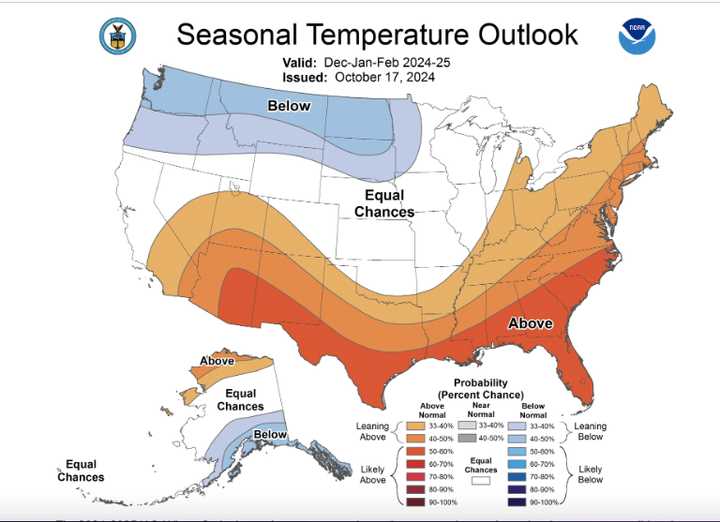A“slowly-developing” La Niña is expected to shape weather throughout the country from December through February, NOAA says.
The La Niña phenomenon occurs when water temperatures near the equator in the eastern Pacific Ocean remain below the historical average for an extended period, which can significantly influence weather patterns across North America, including the trajectory of snowstorms.
“This winter, an emerging La Niña is anticipated to influence the upcoming winter patterns, especially our precipitation predictions,” said Jon Gottschalck, chief of the Operational Prediction Branch of the Climate Prediction Center.
NOAA predicts wetter-than-average conditions for the entire northern tier of the continental US, particularly in the Pacific Northwest and the Great Lakes region, along with northern and western Alaska.
Meanwhile, drier-than-average conditions are expected from the Four Corners region of the Southwest to the Southeast, Gulf Coast and lower mid-Atlantic states.
Green-shaded areas in the first image above are expected to see above-average precipitation, with areas in white predicted to have equal chances of below-, near-, or above-average seasonal precipitation.
Average temperatures are predicted for much of the East Coast. (Click on the second image above).
Check back to Daily Voice for updates.
Click here to follow Daily Voice Setauket-Stony Brook and receive free news updates.

